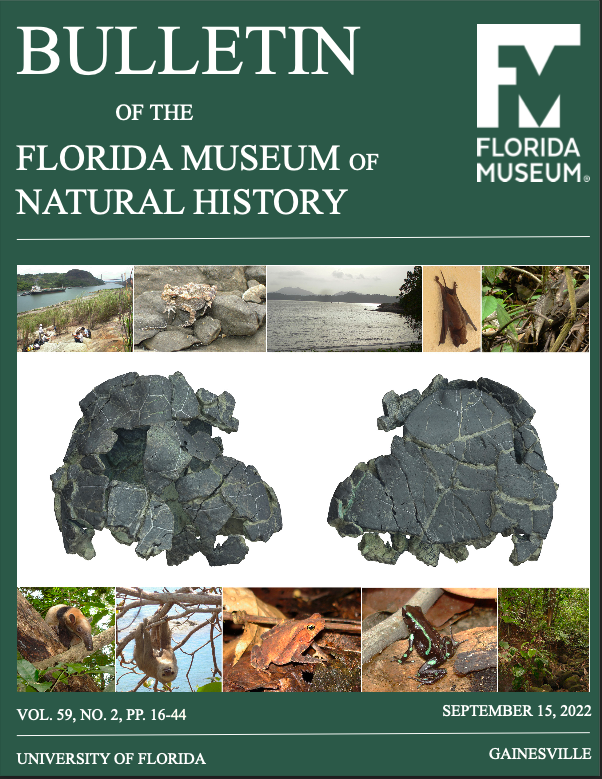A ptychogastrine (Testudines, Geoemydidae) from the early Miocene of Panama and a review of Miocene testudinoids from Central America
DOI:
https://doi.org/10.1234/test5678Keywords:
Ptychogastrini, Rhinoclemmydinae, Geoemydidae, Testudinoidea, Miocene, Central AmericaAbstract
Forachelys woodi gen. et sp. nov. is described from lower Miocene (Arikareean NALMA) exposures of the upper Las Cascadas Formation (~21 Ma) in the Panama Canal Basin. It represents the latest occurrence of ptychogastrine geoemydids in North America, a group known primarily from the early Eocene to late Miocene of Europe. Forachelys woodi shares features with taxa such as Geiselemys ptychogastroides (middle Eocene, Germany) and some species of the Ptychogaster/Temnoclemmys group (late Eocene to late Miocene, Europe). The epiplastral morphology is furthermore comparable to Bridgeremys pusilla (middle Eocene of Wyoming and Utah), a taxon previously interpreted as a rhinoclemmydine ancestor. Within the Las Cascadas Formation, F. woodi co-occurred with an undescribed species of rhinoclemmydine geoemydid that represents the oldest record of Rhinoclemmys (sensu lato). The Miocene fossil record of testudinoids in Central America is reviewed and reexamined. Testudinids are diverse in the Miocene of Panama and Honduras, represented by aff. Stylemys, Caudochelys (2–3 large to giant species), and an undescribed genus and species that resembles ‘Testudo’ costarricensis. Rhinoclemmydines persisted in Panama almost continuously from the early to late Miocene, with records from the Las Cascadas (~21 Ma), upper Culebra (~20–19 Ma), Cucaracha (~19 Ma), and lower Gatun (~12–11 Ma) formations. At least two concurrent rhinoclemmydines are present in the Cucaracha Formation of Panama, and two possibly concurrent taxa in the Gracias Formation (9–6.6 Ma) of Honduras.

